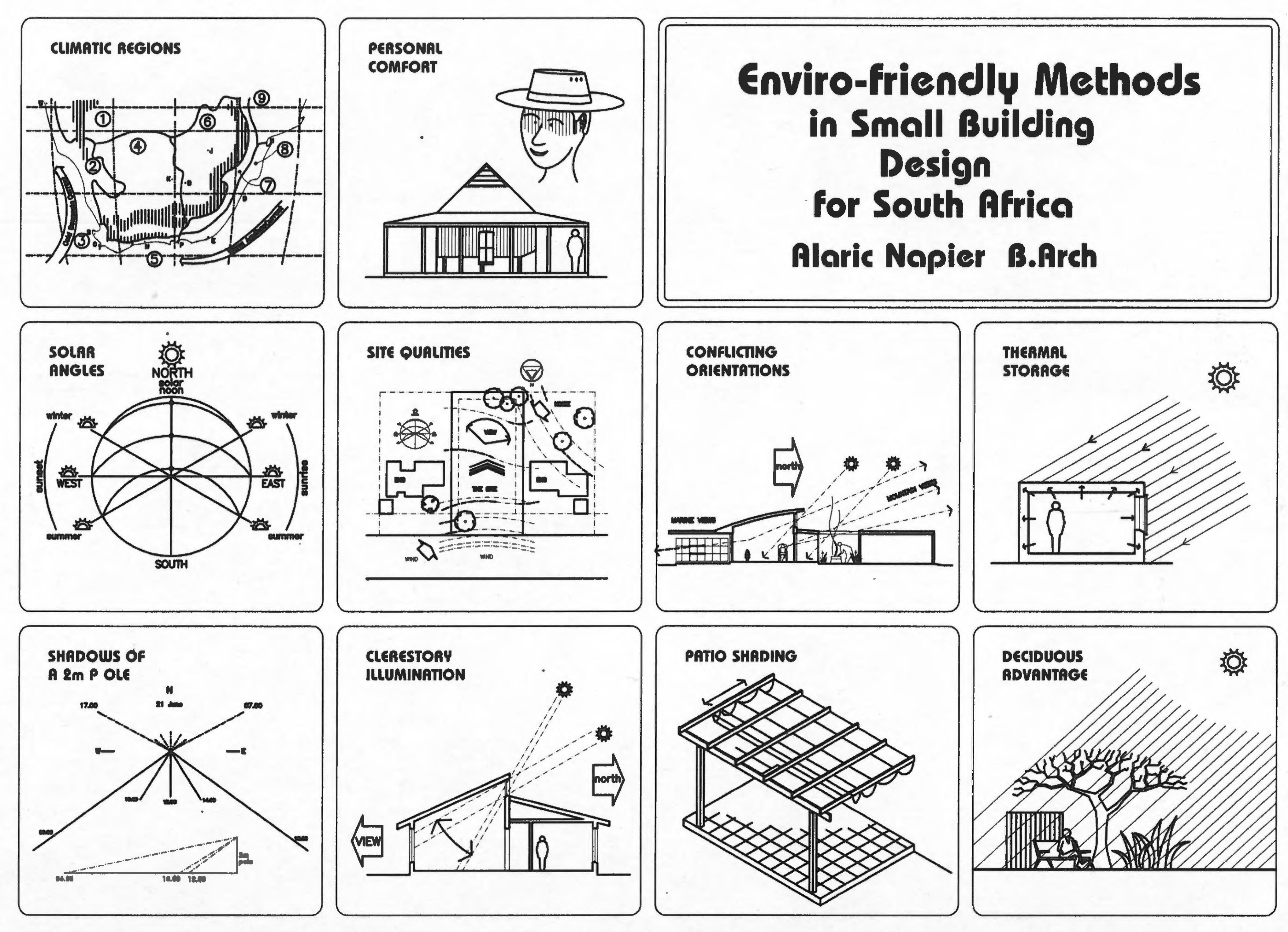Enviro-friendly Methods in Small Building Design for South Africa

"Enviro-friendly Methods in Small Building Design for South Africa" (PDF, 7.2MB) is a comprehensive guide addressing crucial aspects of environmentally conscious building design in residential and workplace settings. Originally published in hard copy in 2000, the book caters to the specific informational needs of local architecture students, aiming to foster awareness and promote the significance of sustainable design.
The content covers a spectrum of topics, including considerations for personal comfort, climatic factors unique to South Africa, judicious application of technical and design solutions, and the pursuit of an ecological and environmentally appropriate architecture. Written with students of architecture in mind, the book has since become a valuable resource for both students and practitioners seeking to integrate climate-conscious design principles into their work.
In an effort to reach a wider audience, the book is now reissued in electronic format under a Creative Commons license. While the electronic edition has undergone some reformatting and minor edits, the core text remains unchanged from its original version. The intention behind this reissue is to facilitate the broader dissemination of fundamental lessons and practices related to passive and climate-conscious design.
The electronic edition is poised to serve as an enlightening and practical tool for architectural students, offering valuable criteria from the early stages of study through to professional practice. It is the fervent hope that this work will continue to inspire and guide future generations of architects in creating sustainable, climate-responsive designs.

Comments